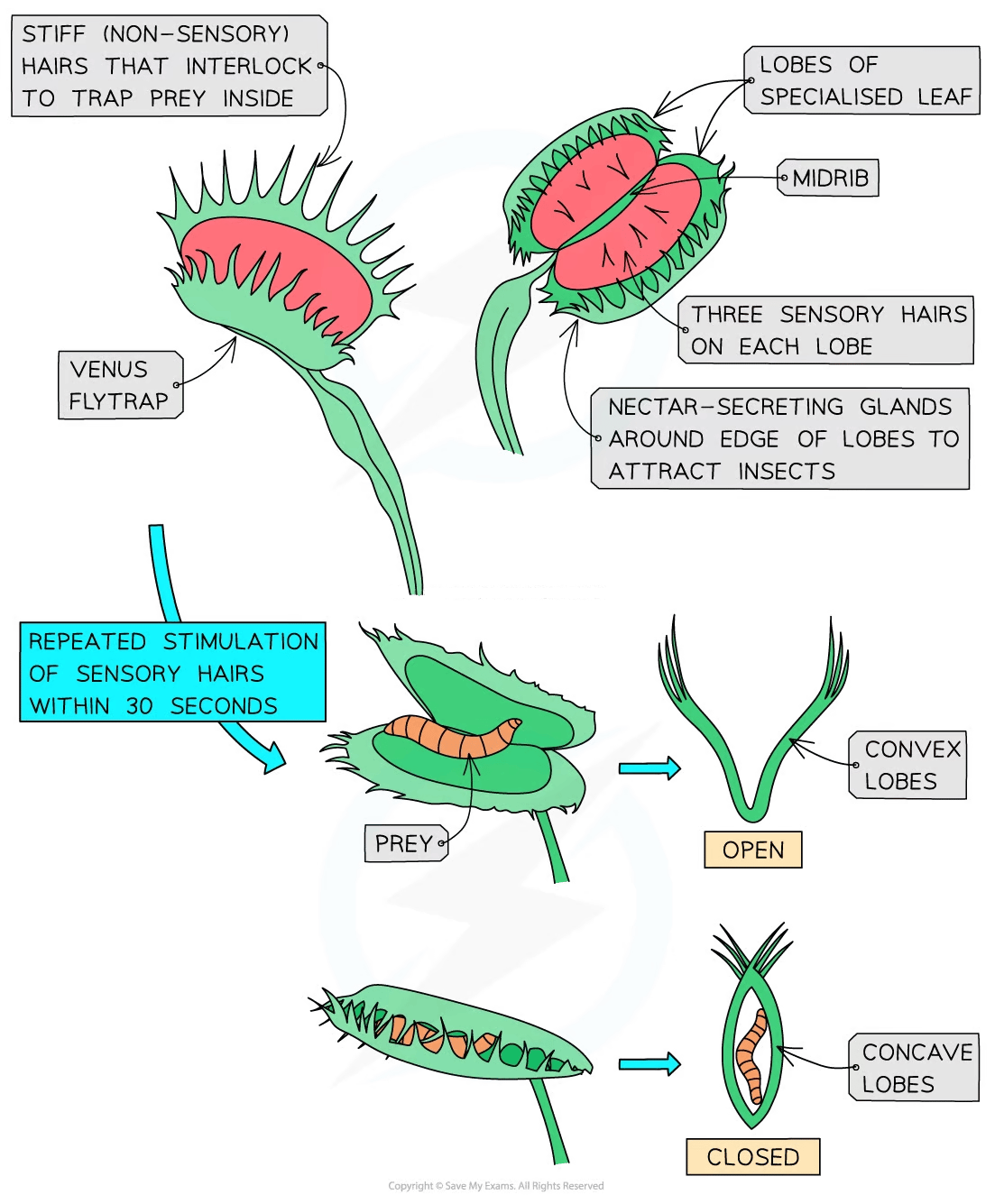Electrical Communication in the Venus Flytrap (Cambridge (CIE) A Level Biology): Revision Note
Exam code: 9700
Electrical communication in the Venus flytrap
The Venus flytrap is a carnivorous plant that can gain nitrogen compounds by trapping and digesting small animals, mainly insects
The specialised leaf is divided into two lobes on either side of a midrib
The inside of the lobes is red and has nectar-secreting glands on the edges to attract insects
Each lobe has three stiff sensory hairs that detect touch
If an insect touches one of these hairs, action potentials are generated
These action potentials cause the two lobes to fold together along the midrib, capturing the insect

How the closure of the trap is achieved
The closure of the leaves occurs when the sensory hairs are touched repeatedly, generating an action potential as follows:
an insect lands on the leaf and touches the sensory hairs
calcium ion channels in cells at the base of the hair open
calcium ions flow in and generate a receptor potential
if two of the sensory hairs are stimulated at the same time, or one hair is stimulated twice within around 30 seconds, an action potential occurs and is propagated across the cells of the trap
If repeat stimulation does not occur then the trap resets and the process needs to start again from the beginning; this ensures that the plant does not waste energy by closing when an insect is not present
the cells at the base of the trap change shape, and the trap closes
Sealing the trap requires ongoing activation of the sensory hairs, which occurs when the prey continues to move around inside the closed trap
further stimulation of the sensory hairs causes calcium ions to enter gland cells where they stimulate the exocytosis of vesicles containing digestive enzymes
the trap then stays closed for up to a week to allow the prey to be digested and the nutrients from it to be absorbed by the plant

Unlock more, it's free!
Did this page help you?